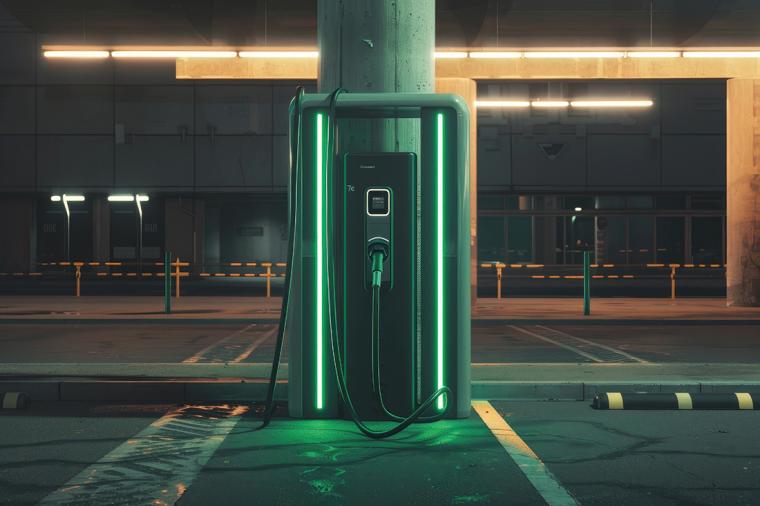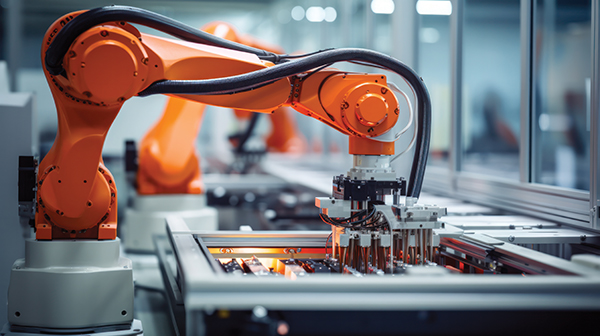
The automotive industry in North America is at a major junction as the industry continues to meet increasingly stringent emissions targets. A transition to battery electric vehicles (BEVs) is hailed as the future of sustainable mobility, but recent market trends and political dynamics raise questions if consumers are ready for mass adoption. We will explore the challenges faced by North American OEMs in meeting regulatory targets, the evolving landscape of electrification strategies and the potential risks and opportunities that may arise from the U.S. election in November.
The Regulatory Landscape

North American OEMs are grappling with the challenge of meeting CO2 annual reduction targets set by the Environmental Protection Agency (EPA), as well as decreasing the Corporate Average Fuel Economy (CAFE) targets from the National Highway Traffic Safety Administration (NHTSA). A few months ago, the EPA’s 2027-2032 MY released its final regulations, with the 2032 target of 85 g/mile of CO2 only slightly higher than the initially proposed 82 g/mile of CO2. Under the initial proposal drafted in April 2023, the earlier annual targets were much more aggressive, easing at the turn of the decade, expecting the torrid increase of BEV sales to eventually slow as consumer reluctance to switch from internal combustion (IC) vehicles increased. At the time the proposal was released, BEV sales grew nearly 60 percent from 474,000 in 2021 to 756,000 in 2022.
The BEV market started cooling off in the second half of 2023 despite 31 new models entering the market between 2022 and 2023. Although 2023 saw a similar 60 percent in volume over 2022, closing the year with nearly 1.2 million BEV sales, the monthly gains versus the previous year were significantly lower in the second half. Tesla began cutting prices to keep its sales up in the face of increasing competition. Some other automakers also lowered prices, while others took no action, observing the market response. Soon after, OEMs started announcing delays in BEV investments and pulling back new BEV launch timings, and withdrew targets of when BEVs would reach profitability.
Furthermore, Canada and California have set ambitious goals of selling only zero emission vehicles by 2035, forcing even higher mandates on the automakers to increase BEV sales.
To help offset the significant cost of this transition, the Biden administration earmarked billions of dollars in tax credits available through 2032 within the Inflation Reduction Act of 2022 (IRA) to increase plug-in vehicle (PEV) sales. These credits are available to consumers as vehicle purchase incentives, and to businesses focused on increasing domestic battery production and expanding the public electric vehicle charging infrastructure.
Consumer Readiness for BEVs
While BEV sales continue growing, there are indications that consumer demand is slowing, raising questions about whether large sectors of consumers are truly ready to move away from combustion vehicles. BEV sales are reaching a volume at which fewer buyers are willing to accept sacrifices such as limited range, longer refueling times or higher purchase prices when considering buying an environmentally friendlier vehicle. Part of this challenge is having to appeal to people purchasing the BEV as a primary vehicle instead of it being a second or third vehicle in the household and to those who may not have the convenience of home charging.
Price also continues to be a hurdle, as there is still a significant price difference between PEVs and non-plug-in internal combustion (IC) powered vehicles. Available purchase incentives are helpful from the federal government and many state governments, but the average transaction prices of BEVs are still thousands higher than IC vehicles. Additionally, the resurgence of available IC vehicles in dealer inventories post-COVID has helped slow the growth rate of BEV sales since late last year.
Third-party studies also show that range anxiety and lack of convenient public charging are also top concerns, despite the higher range capabilities of the latest products in the market. This is a particularly difficult challenge to overcome as the industry balances the massive investments in adding and maintaining public chargers, particularly DC fast chargers, with expanding capacity for BEV production. However, many of these same studies indicate that merely being a passenger in a BEV dramatically increases the likelihood that a consumer will consider a BEV when the time comes to look for a new car.
In response, many automakers are adjusting their electrification plans, emphasizing more implementation of full hybrid (FHEV) and plug-in hybrid (PHEV) technologies. This should serve to 1) meet current demand for vehicles with advanced electrification; 2) expose and familiarize more people to electrified vehicles in general; and 3) help the automakers achieve emissions requirements.
Diversifying Electrification Strategies
The EPA’s initial proposal focused on using BEVs to meet the requirements of the 2027-2032 model year period, particularly to hit the challenging reductions outlined in the earlier years. The revised EPA regulations highlight the ability of automakers to explore diverse electrification strategies to achieve the annual CO2 targets, including three possible fleet scenarios on how the regulations could be met by leveraging a combination of FHEV, PHEV and BEV technologies. This helps acknowledge the fact that automakers will be able to meet future emissions targets with lower planned acceptance and/or a slower BEV rollout, while improving BEV profitability.
Developing the Battery Supply Chain

The growth of BEVs is heavily dependent on the availability and affordability of batteries – the largest single cost in building a BEV. The IRA provides a couple of different tax credits to promote this. The Inflation Reduction Act 30D New Clean Vehicle Credit provides both a carrot and stick. A consumer can potentially receive up to a $7,500 tax credit purchasing a new BEV for personal use, but the vehicle itself must meet certain requirements. These include final vehicle assembly in North America; a price that falls below a price cap based on the vehicle’s body style; the percentage of battery components sourced from within North America (starting at 50 percent in 2023 and reaching 100 percent in the 2029 calendar year); and the sourcing of critical materials from North America or countries with free trade agreements with the U.S. (The percentage of these critical ingredients was mandated as 40 percent in 2023 and will require 80 percent after 2026.)
The Inflation Reduction Act 45X Advanced Manufacturing Production Credit offers credits for U.S.-based refining of critical materials for use in batteries and for producing battery cells, electrode active materials and other battery components.
The EPA’s more linear final CO2 timeline provides a steadier pace to establishing a robust battery supply chain to support increasing BEV demand and refining manufacturing processes to help reduce battery costs. The earlier proposal allowed for a greater possibility of potentially rushing to install capacity at the sacrifice of a smooth quality-assured rollout. Without the IRA and its various restrictions and incentives, developing a local supply chain and preparing the workforce to adapt to the new processes and technologies would be a far slower process, likely relying on regions that are already ahead of the U.S. in this respect, particularly China.
The Impact of the U.S. Election
The upcoming U.S. election in November will bring potential risks and opportunities for the automotive industry. Over the past few decades, environmental policies have become increasingly partisan. The last several elections have proven difficult for automakers as a result. This is an industry that plans its products about three to five years in advance, making the shifts in automotive regulatory policy challenging. Even facing the challenging ZEV mandates installed by Canada and California (eventually selling ZEVs only), the timelines and expectations are set, and automakers can plan out their corporate strategies.
If President Biden is re-elected, the legislation he has worked on in his first term will continue uninterrupted, providing policy continuity for the next few years. If difficulties arise in the industry’s pace of transitioning to ZEVs, a reassessment by the regulatory agencies would likely examine the factors that may have changed since the initial mandate, with adjustments to be made to future regulations.
If Donald Trump is elected president for a second time, a shift in the regulatory landscape for light vehicle emissions targets is expected. In his past term as president, he greatly reduced many of the environmentally focused laws enacted by his predecessor, including significantly easing annual CO2 and fuel economy targets for light vehicles. Additionally, he rescinded the EPA’s waiver enabling California to require more stringent emissions requirements under the Clean Cars Act, negating the state’s ability to impose its ZEV legislation.
It is expected that he would enact similar changes over the next four years, again easing the stringent CO2 and fuel economy changes enacted under the Biden administration toward ZEV adoption. This will take some time, however, as he will have to find and appoint new administrators, have new studies performed focusing on why the current emissions targets are flawed and will negatively impact the auto industry and the country, and propose and enact replacement legislation. It has been estimated that these changes would take between two and a half to three years to implement, with the revised targets taking effect for 2027-2028 model years.
Furthermore, Trump might be expected to reduce spending under the IRA. The most likely target of this would be the allowance under which personal vehicle leasing is covered by the IRS’ 45W commercial vehicle tax credits, which do not require the same sourcing stipulations of the 30D tax credit. This would considerably reduce the number of PEVs imported into the U.S. from non-USMCA countries. The 45W credits would likely remain untouched since their focus is ultimately to attract investment to U.S.-based battery manufacturing capacity, increase production volume, and retain appeal for companies to focus research and development capabilities in the U.S.
Meanwhile, the legacy OEMs, with a proficiency in IC vehicle production, would be expected to eventually lower future BEV production volumes to varying degrees and capitalize on selling more profitable non-plug-in models for a longer period of time. On the surface, this would certainly improve the margins on North American business units. However, the profits would ultimately be funneled to continue production of BEV models produced in other regions for markets with stricter emissions requirements, focusing on Europe and China. A secondary concern would be the impact on potential exports volume. Continuing to build IC models when many regions globally are working to reduce and eliminate them will restrict market appeal abroad.
The automotive industry in North America faces a challenging landscape in the coming years as it strives to meet increasingly restrictive CO2 targets. With sales of BEVs slowing in recent months, OEMs are updating their near-term electrification strategies to meet consumer demand while still meeting fleet regulatory requirements. The revised EPA regulations, with more linear annual goals and recognition of diversified electrification strategies, offer the OEMs flexibility to navigate this transition effectively. Despite potential changes resulting from the U.S. elections in November, collaboration between OEMs, the government and the many suppliers will be crucial for a successful transition to an increasingly sustainable automotive future. T&ID
